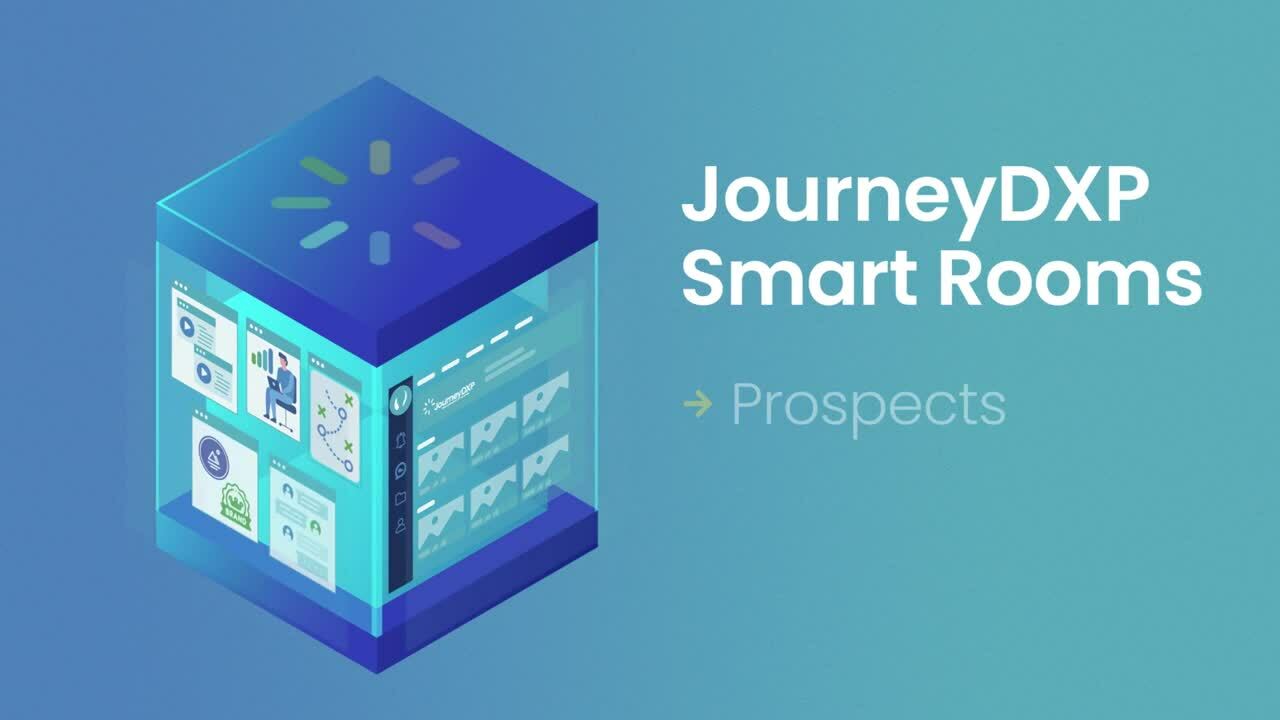In today’s fast-paced business environment, digital sales rooms have emerged as a powerful tool that revolutionizes how marketing, sales, and account management teams engage prospects, customers, and partners. By digitizing the customer journey, organizations improve engagement, streamline operations, enhance collaboration, and drive better results.
Digital Sales Rooms: An Overview
Digital sales rooms, also known as virtual deal rooms or online sales platforms, are secure and personalized online spaces where account teams manage the customer journey. These platforms provide a secured and personalized digital experience to engage prospects, partners, and customers by sharing content, automating processes, collaborating internally and externally, and providing insight into the digital body language.

Smart Rooms launched in 2016 as one of the first DSRs. Our research identified the shift in how customer buying behaviors paralleled the B2C e-commerce market. Customers preferred digital experiences, but sales reps were still using decades-old sales practices that were growing more obsolete.
The focus at the time was connecting sales teams with customer teams to make buying easier. Quickly, organizations began to use Smart Rooms for key processes after the sale, such as onboarding customers and account management. Marketing departments then began to use Smart Rooms for a variety of use cases early in the customer journey before the sale such as lead development, webinars, events, new product introductions, and activating stalled pipelines.
The addition of DSRs to the Gartner CRM Hype Curve in 2021 helped to accelerate the market growth. Their research titled: “Deliver Value Through Digital and Omnichannel Sales Models” shows a steady shift of customer preferences from in-person sales interactions to digital channels. B2B buyers spend only 17% of the total purchase journey with sales reps. Because the average deal involves multiple suppliers, a sales rep gets roughly 5% of a customer’s total purchase time. And 44% of millennials prefer no sales rep interaction in a B2B setting.
Forrester recently published “Digital Sales Rooms: Hype or Reality? Digital sales rooms (DSRs) belong to a class of innovations that can only be understood when you use them. The disruptive value of the innovation isn’t obvious from the outside, but once experienced, it becomes viral. Apple products are a classic example.
Benefits of Using Digital Sales Rooms
There are many benefits to using digital sales rooms, including:
- Improved communication: DSRs provide a centralized location for sales and marketing teams to share information with buyers. This can help to improve communication and collaboration between the two teams, which can lead to faster and more successful sales cycles.
- Increased buyer engagement: DSRs can help to increase buyer engagement by providing them with access to

information and resources that they need to make informed decisions. Buyers can also use DSRs to ask questions and get clarification from sales reps. - Improved sales productivity: DSRs can help sales reps to be more productive by providing them with a single place to store and find the information they need. This can free up reps’ time so that they can focus on building relationships with buyers and closing deals.
- Increased sales visibility: DSRs provide sales managers with visibility into the sales process. This can help managers to identify opportunities to improve the sales process and close more deals.
DSRs in 2023
By 2025, Gartner expects 80% of B2B sales interactions between suppliers and buyers to occur in digital channels. Customers are demanding better experiences and rewarding companies that make it easier to self-educate, collaborate, and engage with salespeople at the right time. In 2023, DSRs are being used by sales, marketing, and account management teams in a variety of ways.
Sales teams are using DSRs to:
- Develop Opportunities
- Cross Sell
- Shorten sales cycles.
- Increase close rates.
- Track buyer engagement and identify opportunities to nurture leads.
- Collaborate with buyers and stakeholders.
Marketing teams are using DSRs to:
- Develop leads into active opportunities.
- Engage and educate partners.
- Provide buyers with information about products and services.
- Position the company as an expert with thought leadership.
- Drive traffic to the DSR from a website, email, and social media campaigns.
Account management teams are using DSRs to:
- Onboard new customers.
- Manage and retain existing customers.
- Educate and expand customers on new solutions.
- Provide ongoing support and share updates about products and services.
- Expand relationships with customers.
Tips on using DSRs effectively
- Personalize the experience – make sure the DSR is well designed and reflects the customer’s priorities.
- Empower the customer
 – customers understand the who and how to get a deal done and providing customers the ability to invite others, message, and share content with their colleagues, increases our close rates.
– customers understand the who and how to get a deal done and providing customers the ability to invite others, message, and share content with their colleagues, increases our close rates. - Continuous engagement – a consistent and relevant customer cadence is one of the most effective ways to advance the customer journey.
- Aligning marketing and sales – marketing’s role is critical and often evolves from tactical to strategic.
- Leverage resources – JDXP offers an on-demand Smart Care Service which incorporates best practices and design skills to marketing and sales teams.
The Future of Digital Sales Rooms
DSR adoption is proliferating, as more and more sales teams realize the benefits they offer. In a recent survey, 75% of sales leaders said they plan to adopt a DSR in the next year. Here are some of the key trends that will shape the future of DSRs:
- Increased automation: like many other parts of the business, there are endless opportunities to automate selling and buying activities.
- Integration with other tools: Smart Rooms are natively built on Salesforce and the experience is unrivaled. DSRs are also being integrated with other sales tools such as marketing automation platforms, Microsoft Teams, CPQ, websites, and a variety of other tools. This integration allows sales and customer teams to work more efficiently and effectively by providing them with a single view of the customer and the ability to automate tasks.
- Scalability: the key is to maintain the personalized experience for each customer while also scaling across accounts, industries, and regions. Connected Smart Rooms maintain a link to the template for easy updates and consistency.
- AI-powered: DSRs are also being powered by AI to provide sales teams with insights into buyer behavior. This data can be used to improve the buyer experience, identify opportunities to close deals and optimize the sales process.
- Organizational priorities: the vast majority of CMOs and CROs we talk with have developed a digital selling strategy. Many have deployed Digital Sales Rooms to a subset of their teams to scale across the enterprise in the next few years.
The future of digital sales rooms (DSRs) is bright. As buyers become more demanding and sales cycles become longer and more complex, DSRs are becoming an essential part of the sales process. They will help sales teams to streamline the sales process, provide a better buyer experience, and close more deals.
POPULAR
Launching a Dynamic Digital-First Customer Experience
Growth will always be a top priority for B2B companies. If not, customers will inevitably outgrow your offering, and your company will become obsolete.
RELATED
Why The The First 120 Hours After A Deal Is Signed Mean Everything
You crafted a personalized customer experience. You orchestrated real collaboration. You ensured everyone stayed on the same page, no matter when they joined the process. Everyone’s on board. Everyone’s happy… you inked the deal. At...




